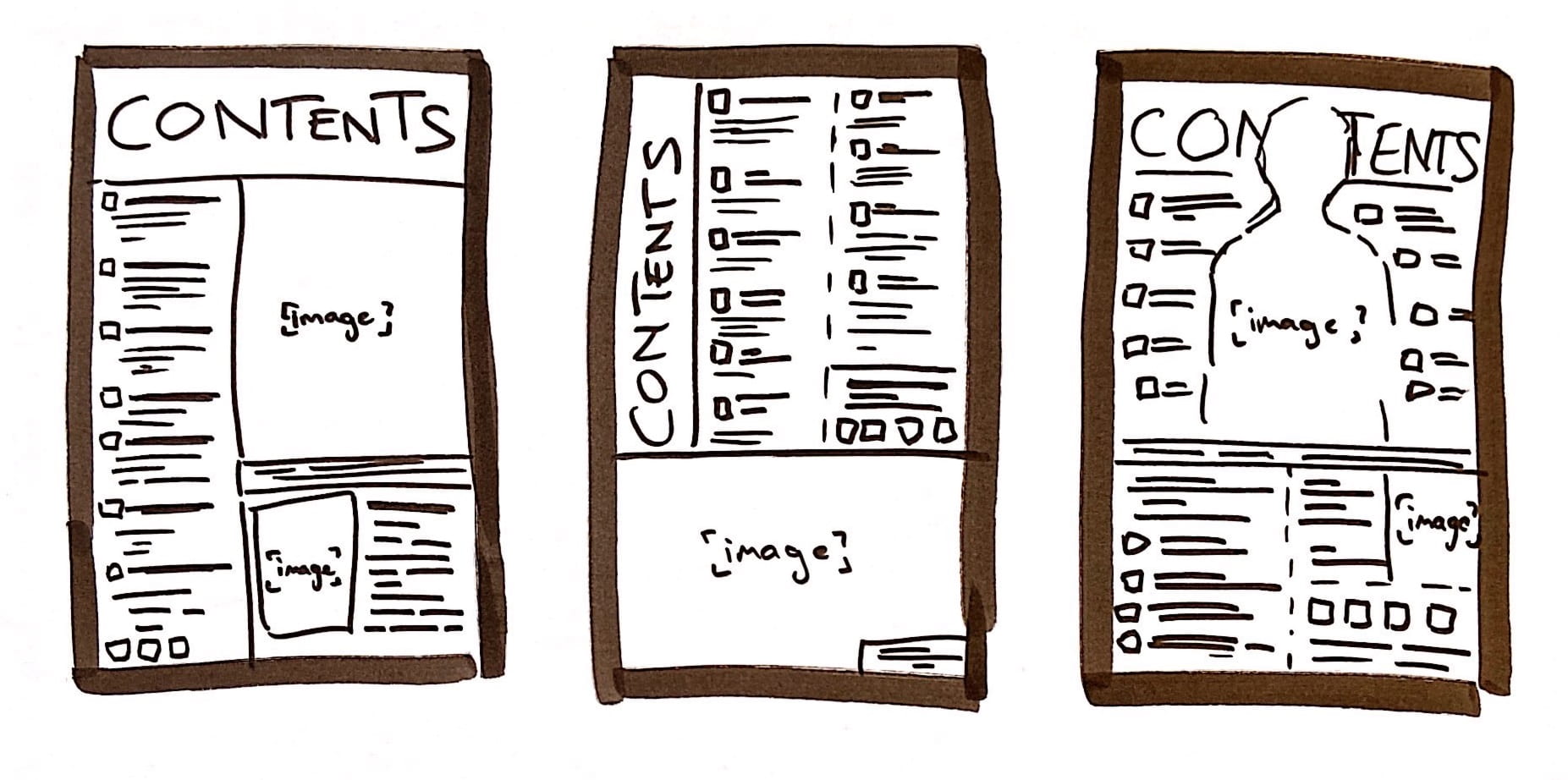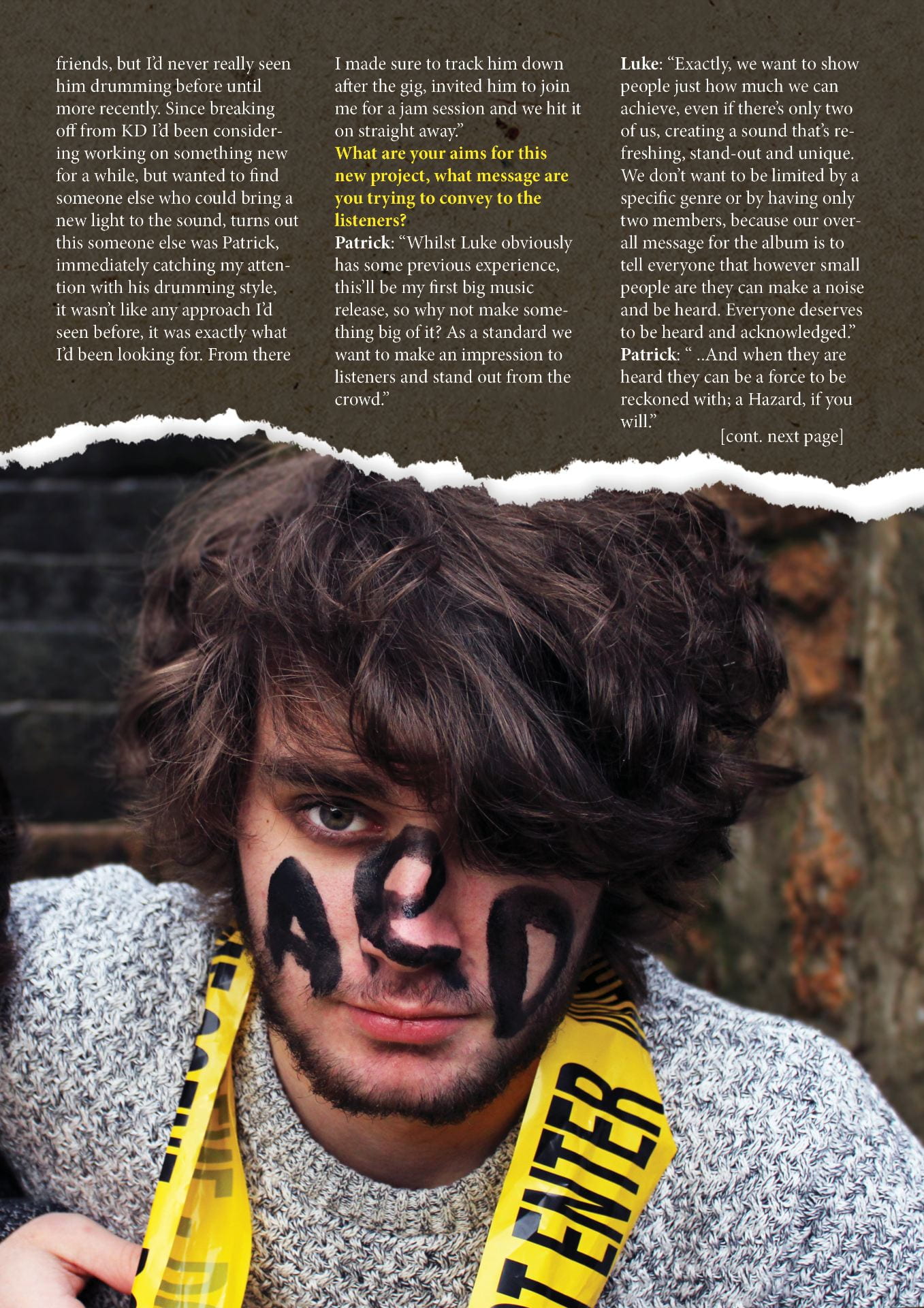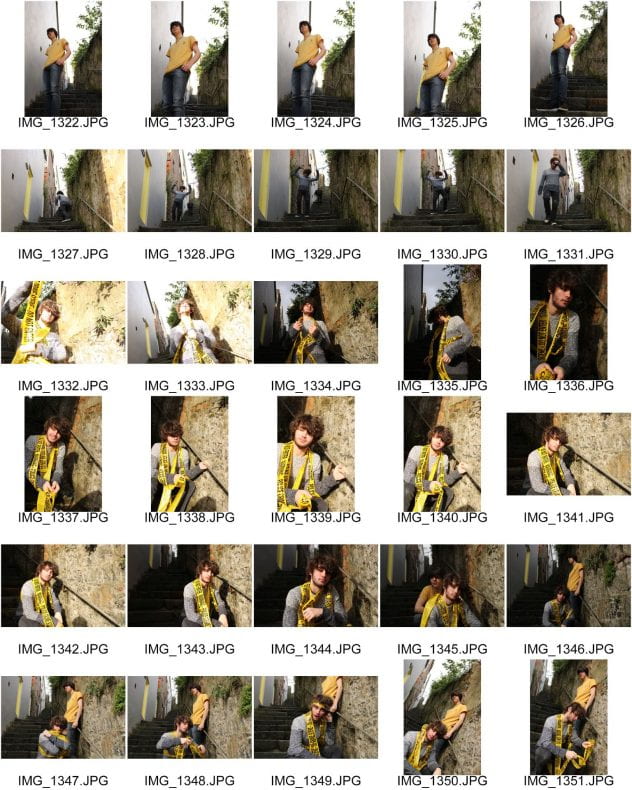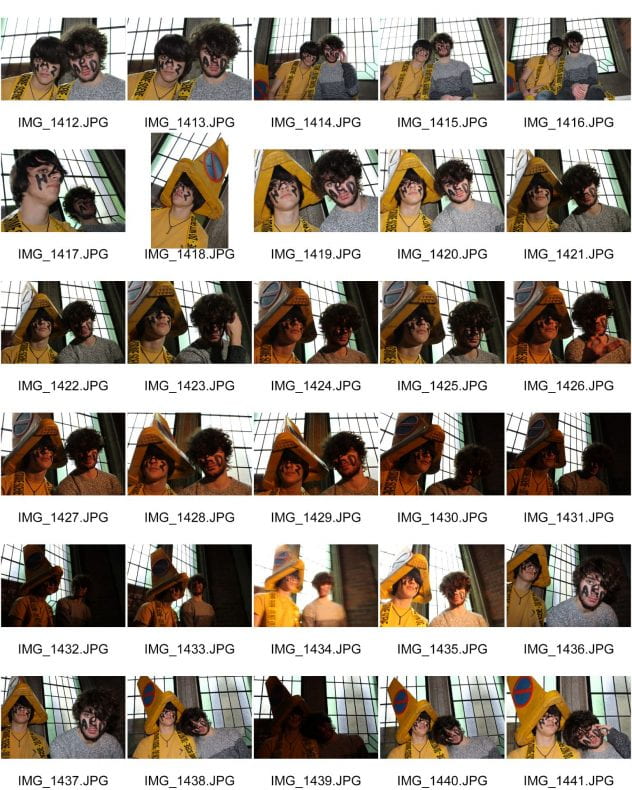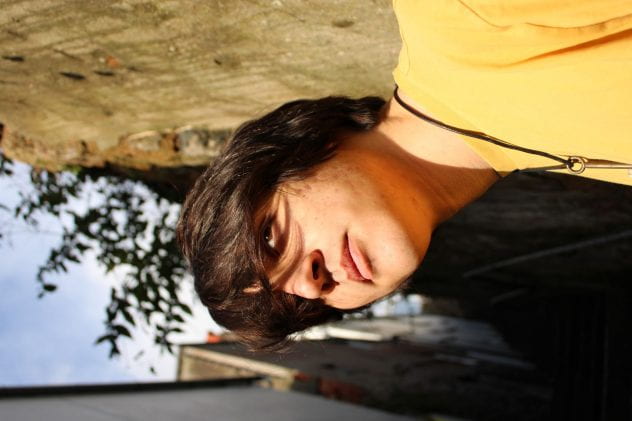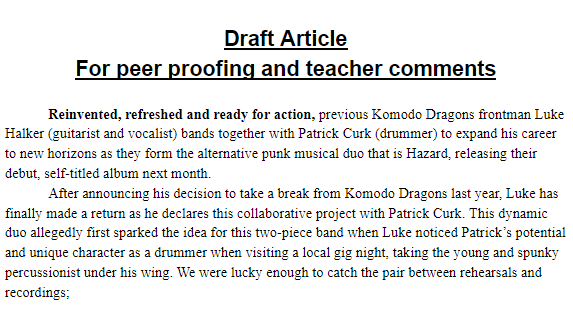After taking in the feedback given and reflecting on the points listed in my previous post I have created a final draft of my feature article content;
———
Reinvented, refreshed and ready for action, previous Komodo Dragons frontman Luke Halker (guitarist and vocalist) joins together with Patrick Curk (drummer) to expand his career to focus on new horizons as they form the alternative punk musical duo that is Hazard, releasing their debut, self-titled album next month.
After announcing his decision to take a break from Komodo Dragons last year, Luke has finally made a return as he declares this collaborative project with Patrick Curk. This dynamic duo allegedly first sparked the idea for this two-piece band when Luke noticed Patrick’s potential and unique character as a drummer when visiting a local gig night, taking the young and spunky percussionist under his wing. We were lucky enough to catch the pair between rehearsals and recordings;
Had you known each other before or was this a case of band-at-first-sight?
Luke: “I’d seen him around before, living in the same town we’d crossed paths at a couple local gigs and have plenty of mutual friends, but I’d never really seen him drumming before until more recently. Since breaking off from KD, I’d been considering working on something new for a while, but wanted to find someone else who could bring a new spark to the sound, turns out this someone else was Patrick, immediately catching my attention with his drumming style, it wasn’t like any approach I’d seen before, it was exactly what I’d been looking for. From there I made sure to track him down after the gig, invited him to join me for a jam session and we hit it on straight away.”
What are your aims for this new project, what message are you trying to convey to the listeners?
Patrick: “Whilst Luke obviously has some previous experience, this’ll be my first major music release, so why not make something big of it? As a standard we want to make an impression to listeners and stand out from the crowd.”
Luke: “Exactly, we want to show people just how much we can achieve, even if there’s only two of us, creating a sound that’s refreshing, stand-out and unique. We don’t want to be limited by a specific genre or by having only two members, because our overall message for the album is to tell everyone that however small people are they can make a noise and be heard. Everyone deserves to be heard and acknowledged.”
Patrick: “ ..And when they are heard they can be a force to be reckoned with; a Hazard, if you will.”
What are your inspirations behind your new sound, are there any particular artists that have influenced you in making this happen?
Patrick: “Personally, I’ve always been inspired by Green Day, especially when covering a theme like this, inspired by some of the messages from Revolution Radio, as well as the inspiring amount of energy that Tré Cool [the drummer] has in all of their performances.”
Luke: “For me, I feel that there’s a whole collection of other influences rather than one pinpointed artist, for this project in particular I’ve been inspired by the powerful sound that Royal Blood can achieve with only two members, as well as the genre-defining style of My Chemical Romance, and how they can tell such a convincing and heartfelt story through their performance.”
After this release, do you have any plans for the future?
Luke: “We don’t want to reveal too much too soon, but there’s definitely some more big things coming up to do with this release that I’m very excited about…”
Patrick: “Definitely, not to give too much away, but I can say there’s a good chance of some concerts coming up that we’ve been looking forward to and working on for a while, as well as some potentially new merchandise releases that we’ve put a lot of effort and consideration into, in order to bring you something worth every penny! So watch this space and stay up to date with our social media [@haz_ard_band] for more information!”
Have no fear, as we at LFX magazine will be sure to keep you all updated as these two release some more info. You can also expect and album review in next month’s issue, as well as more regular updates on our Twitter, Facebook and Instagram to keep you in the loop!
———
By making these changes I have made sure to include more information about upcoming projects to really create excitement in readers,a s well as generally ensuring the article remains engaging and interesting throughout as well as easy and clear to read.

